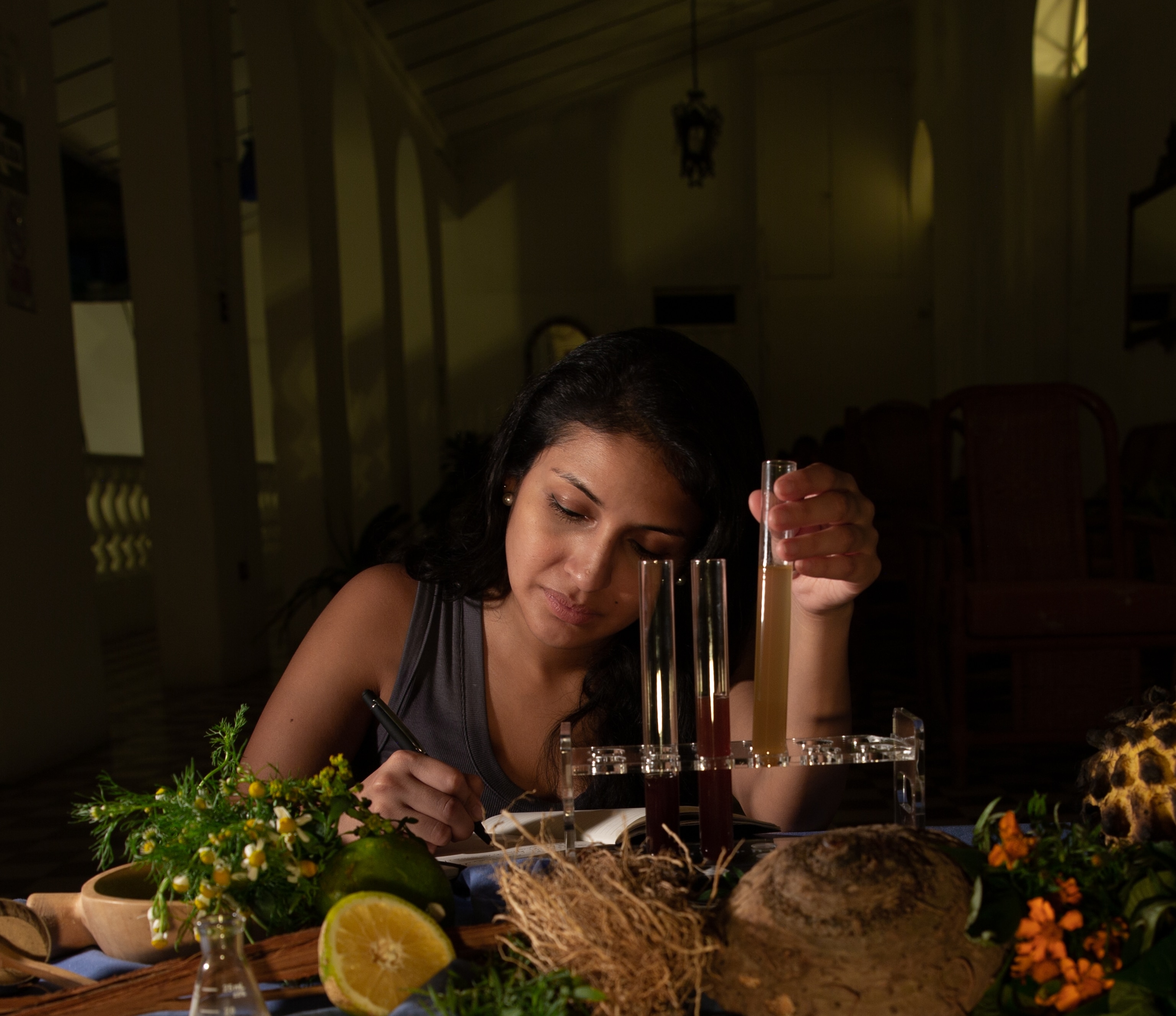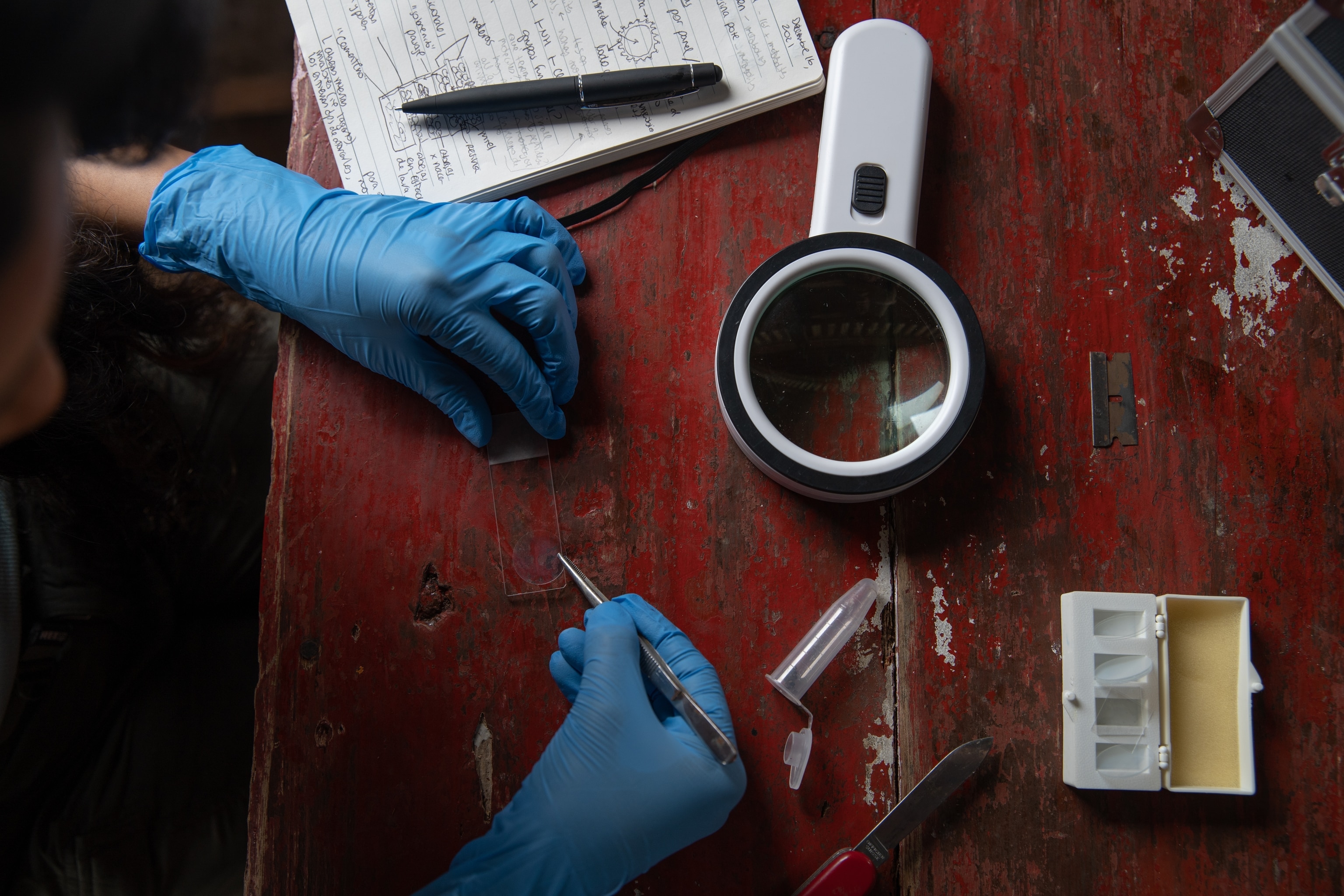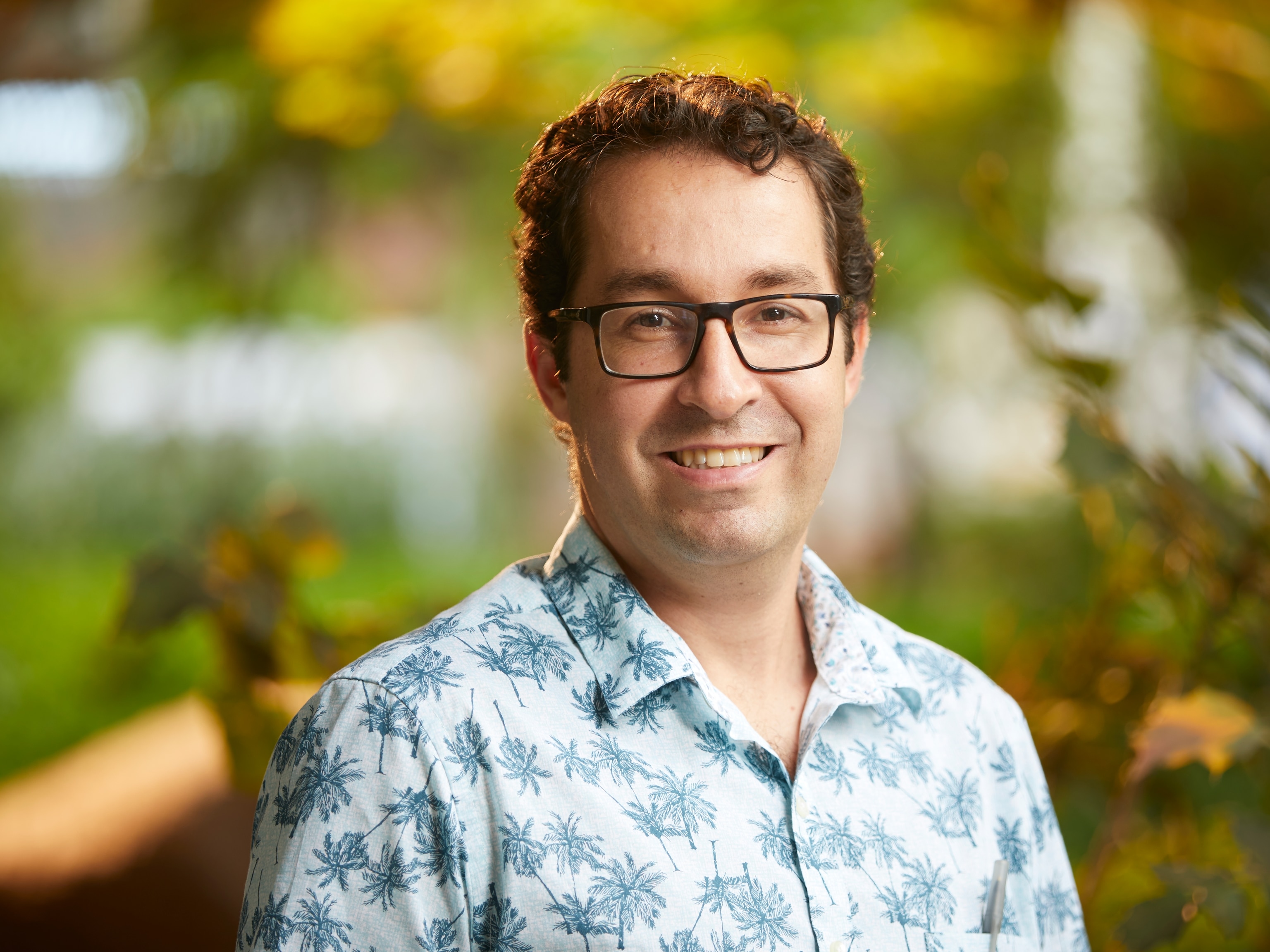Rosa Vásquez Espinoza: Magnifying the world’s tiniest life forms
National Geographic Explorer and chemical biologist Rosa Vásquez Espinoza takes a closer look at the microbial world of the Amazon to shed light on how microscopic creatures help sustain all other lifeforms.

Through years of scientific research and exploration, National Geographic Explorer Rosa Vásquez Espinoza has become well-acquainted with a universe most humans have trouble imagining, because it’s virtually unseeable.
As a chemical biologist and postdoctoral researcher at the University of Michigan, she specializes in investigating Amazonian species only visible by zooming in. Through a microscope, she not only sees microorganisms, she evaluates how these tiny life-forms could create big changes for people and the planet.
Vásquez Espinoza has found that nature, down to its smallest beings, has found a way “to hijack and overcome” a range of environmental threats. Though it may be difficult to believe, given the scope of environmental changes, Vásquez Espinoza insists that solutions are quietly embedded all around us, and she is determined to bring them to the surface.
“Microbial life on Earth sustains everything we know as life—our bodies, our waters, our oceans, our trees, our animals,” she explains. And if we want to effectively protect areas that are threatened, we need not only to learn about larger organisms but also those less obvious.
“By looking at the micro-life we are able to unlock its solutions and use that knowledge to remedy the damage we are doing,” Vásquez Espinoza says.
Vásquez Espinoza, who is from the Peruvian Andes, has a longstanding relationship with the rainforest’s abundant sources of power and healing. Her grandmother practiced traditional medicine, plucking remedies from the natural pharmacy in their backyard, and since childhood, Vásquez Espinoza has turned to the Amazon in search of more solutions, to improve more lives.
Since 2019, she has been surveying microscopic species in and around the Boiling River— a nearly four-mile stretch of scalding water, flowing deep in the Peruvian Amazon. Inspired by fellow Explorer Andrés Ruzo’s initial visit to the site, Vásquez Espinoza was curious about what the world could learn from the micro-universe, with an emphasis on species able to survive at extreme temperatures, or “extremophiles.”
At a bubbling 200ºF, the river devours most life that dares get too curious, but a select few have evolved for the harsh conditions. “Life can flourish here,” Vásquez Espinoza says, and the ability to do so can “help us understand mechanisms of resistance, protection, and perhaps medicines.” But we have to first acknowledge their existence if we are to leverage their potential.
Microorganisms, also called microbes, encompass fungi, bacteria, protozoa, and viruses, Vásquez Espinoza notes, describing their nature as twofold: “They can be harmful in some ways, but in many others they give us more superpowers,” she explains, pointing to the last two years of life disrupted by the SARS-CoV-2 virus as evidence that a non-visible life form can have profound effects.
Another inconspicuous community Vásquez Espinoza is interested in is flourishing in bee crops. Her latest work involves taking a closer look at stingless bees near Iquitos in Peru’s northern Amazon, and how their consumption of medicinal flora is producing medicinal honey.
The discovery is opening possibilities in the realm of ancestral healing practices, and has helped nourish the local economy which, Vásquez Espinoza notes, took a hit due to slow tourism seasons during the pandemic. The insects’ feeding tendencies could also be key to replenishing a quickly-receding jungle.
“The bees have been linked to [increased] agricultural crop yields of up to 44 percent,” Vásquez Espinoza explains. These findings were recorded by her colleague, scientist Cesar Delgado Vásquez, whose research also suggests there are approximately 400–800 stingless bee species yet to be discovered; up until recently, there were thought to only be 55.
“This is important to keep in mind not only as we think in sustainable agricultural practices but also when we talk about reforestation,” she says.

The overarching goal of her work to uncover the hidden world of tiny creatures, titled "MicroAmazon," is supported by The Society, the Peruvian Government, the University of Michigan Biosciences Initiative, and David H. Sherman's laboratory in the University of Michigan Life Sciences Institute.
Vásquez Espinoza's ultimate vision is a user-friendly microbial map of the Peruvian Amazon which will showcase new species discoveries along with their medicinal abilities.
The revelations of the research, funded by the National Geographic Society, should be presented in a way that’s interesting and engaging, Vásquez Espinoza insists, stressing her desire to connect people to this powerful yet unseen world.
As an award-winning artist and dancer, she’s determined to not limit science to scientists, but to bridge gaps in valuable information sharing by tapping into her creative mind.
“I think I’ve always thought more like an artist and I’ve been trained as a scientist,” she says, reassured of her dynamic nature. She hopes to fuse her creative mind and professional training to make her work tangible, and continue unraveling mysteries with an aim at improving lives.
“There are so many questions still, and people just haven’t put the light where it’s dark,” she says. “I’m hoping that by doing my best, I can encourage others to do the same.”
ABOUT THE WRITER
For the National Geographic Society: Natalie Hutchison is a Digital Content Producer for the Society. She believes authentic storytelling wields power to connect people over the shared human experience. In her free time she turns to her paintbrush to create visual snapshots she hopes will inspire hope and empathy.



